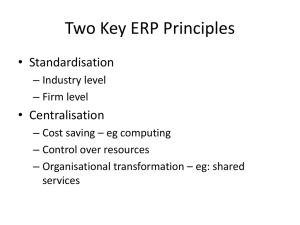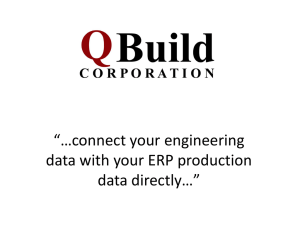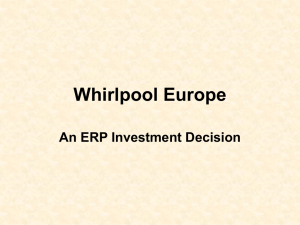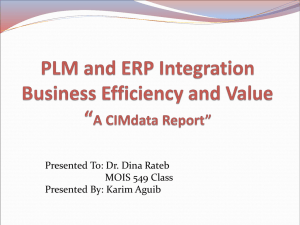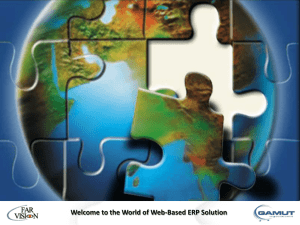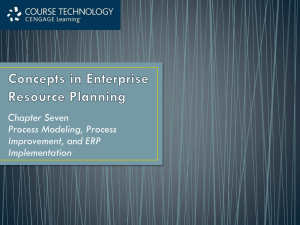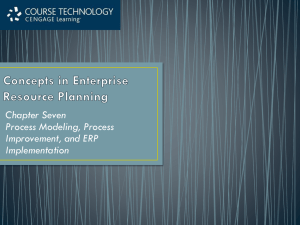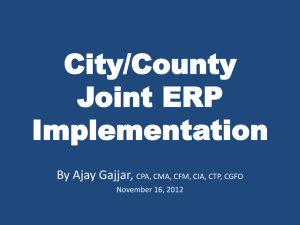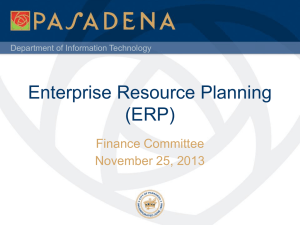Enterprise Resource Planning (ERP)
advertisement
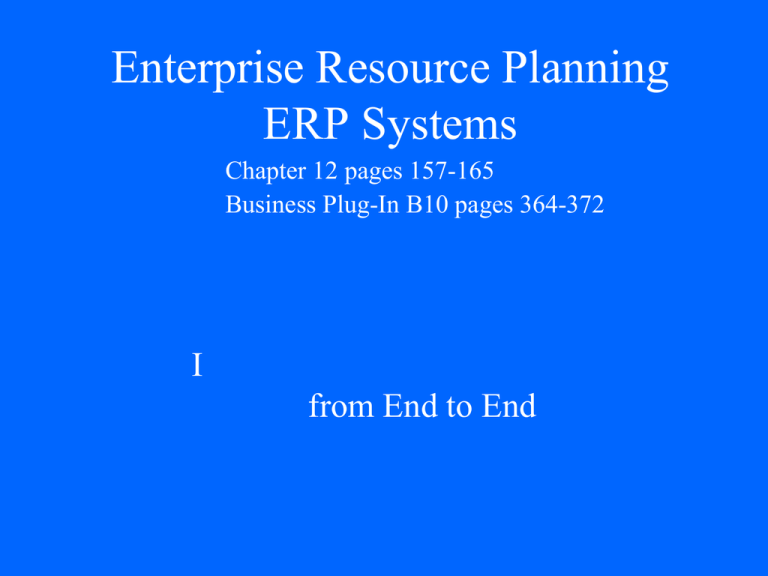
Enterprise Resource Planning ERP Systems Chapter 12 pages 157-165 Business Plug-In B10 pages 364-372 I from End to End • SCM systems focus specifically on • CRM systems focus specifically on The organization before ERP ( Isolated Information: systems) their own systems Update issues Redundant/ Inaccurate and different Different in the different databases Can’t access information maintained by another department Can’t of the entire organization ERP: Bringing the Organization Together • ERP – integrates (or integrated set of IT systems) so that employees can make enterprise wide decisions by viewing enterprise wide information on all business operations ( enterprise wide information) Keyword in ERP is “enterprise” ERP systems focus on all processes, departments and operations for the entire enterprise We don’t need this ERP stuff. We already have enterprise wide software that we are all using. It is called a SPREADSHEET. S a l e s A c c t g Enterprise Resource Planning • ERP systems and correlates the data generating an enterprise wide view that is consistent and real-time. involved in sourcing, producing and delivering a company’s product • C • Complete • Real time • Consistent • O Components of ERP Software • Three core components focus on (accounting/finance, production/materials management and HR) • Extended components typically focus on and require interactions with customers, suppliers and business partners – Typically Internet enabled. Make sure that you know what each component typically handles. Skipped details slides follow CORE ERP COMPONENTS • Accounting and finance component – manages accounting data and financial processes within the enterprise with functions such as general ledger, accounts payable, accounts receivable, budgeting, and asset management • Human resource component – tracks employee information including payroll, benefits, compensation, performance assessment, and assumes compliance with the legal requirements of multiple jurisdictions and tax authorities CORE ERP COMPONENTS • Production and materials management component – handles the various aspects of production planning and execution such as demand forecasting, production scheduling, job cost accounting, and quality control Extended ERP Components • Extended ERP components include: – Business intelligence • Tools to help analyze your business information and better understand it so that you can better understand the business. – Customer relationship management – Supply chain management – E-business • E-logistics – manages the transportation and storage of goods • E-procurement – the business-to-business (B2B) purchase and sale of supplies and services over the Internet Enterprise Resource Planning (ERP) • At the heart of all ERP systems when a user enters or updates information , , it is • E Enterprise Resource Planning (ERP) ERP Benefits 1. 2. Having integrated systems helps that many businesses had previously started to use (also didn’t have to fix those old legacy systems) Integrate financial information and customer order information 3. Everyone working with the same information and removes misinformation 4. Standardize and speed up manufacturing processes, as well as reduce inventory 5. ERP addresses the 6. One of the greatest benefits of an ERP system is . Provides organizations with information that was previously difficult (if not impossible) to obtain, allowing the organization to perform more efficiently and effectively. ERP Risks (Costs) Difficult to Employees • Costly in terms of One vendor risks: too costly to Company essentially held hostage. . Microsoft Business Solutions Great Plains Dynamics


